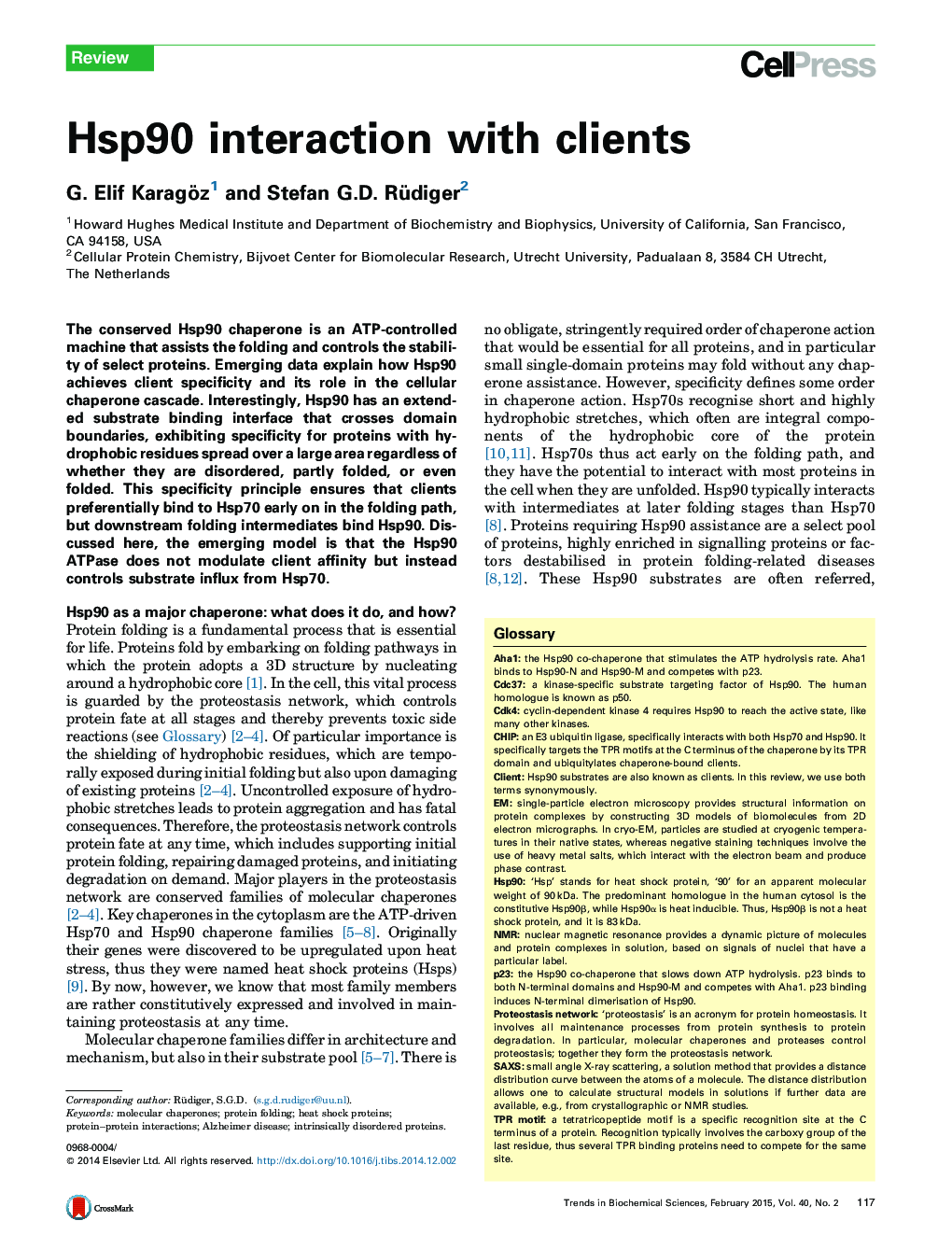| Article ID | Journal | Published Year | Pages | File Type |
|---|---|---|---|---|
| 2030578 | Trends in Biochemical Sciences | 2015 | 9 Pages |
•Hsp90 recognises substrate by an extended interface with scattered hydrophobics.•Hsp90 binds folded proteins, folding intermediates, and disordered proteins.•Binding specificity determines that Hsp70 acts early and Hsp90 acts late.
The conserved Hsp90 chaperone is an ATP-controlled machine that assists the folding and controls the stability of select proteins. Emerging data explain how Hsp90 achieves client specificity and its role in the cellular chaperone cascade. Interestingly, Hsp90 has an extended substrate binding interface that crosses domain boundaries, exhibiting specificity for proteins with hydrophobic residues spread over a large area regardless of whether they are disordered, partly folded, or even folded. This specificity principle ensures that clients preferentially bind to Hsp70 early on in the folding path, but downstream folding intermediates bind Hsp90. Discussed here, the emerging model is that the Hsp90 ATPase does not modulate client affinity but instead controls substrate influx from Hsp70.
